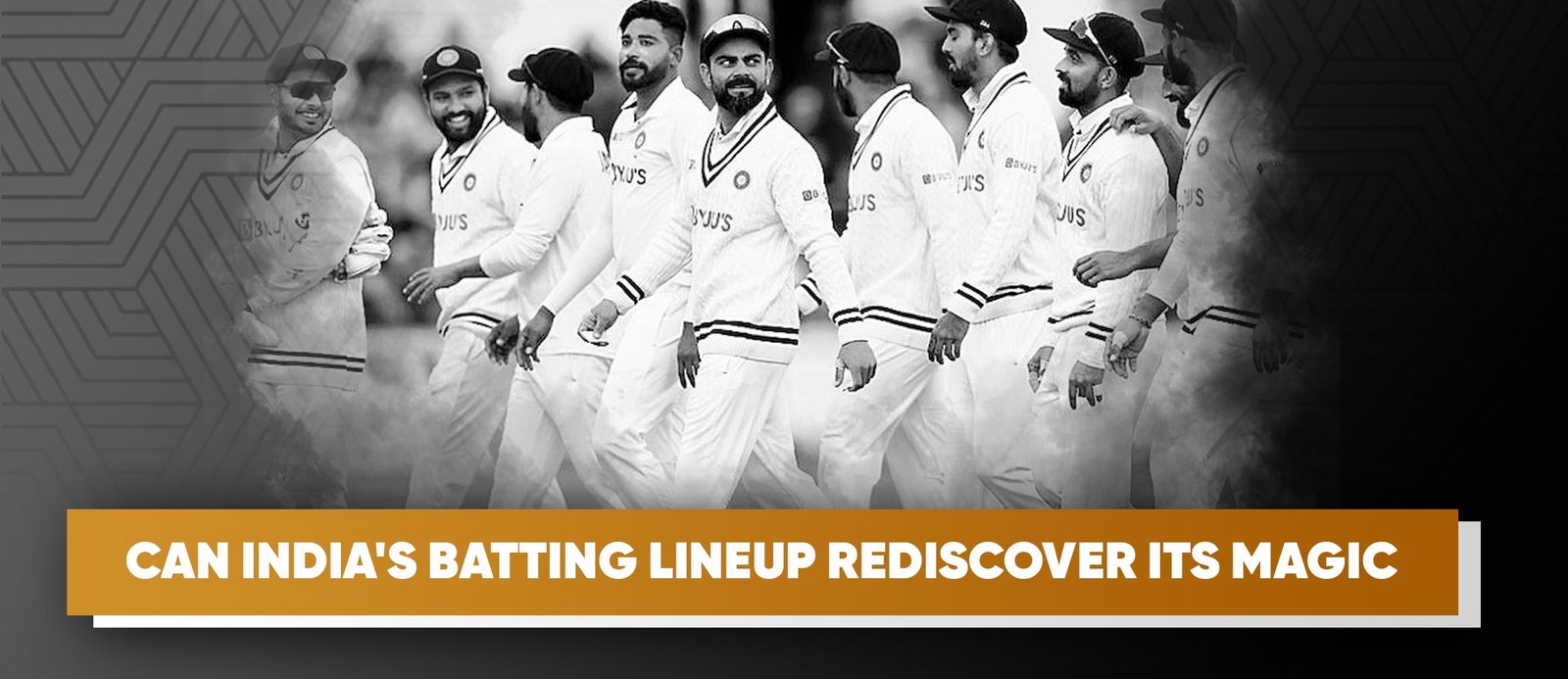Can India’s Batting Lineup Rediscover Its Magic?

For years, India has been the toughest fortress to breach in men’s Test cricket. The numbers back this claim: since 2013, India boasts an impressive 40-4 win-loss record at home, the best among all teams. Their closest competitor, Australia, stands at 41-7 during the same period. India’s dominance, particularly from 2013 to 2020, was overwhelming. With a 28-1 record during this period, India averaged an astounding 44.05 runs per wicket with the bat, while their bowlers excelled, conceding just 23.30 runs per wicket.
However, since 2021, this dominance has seen a dip, particularly in batting. In the last four years, India’s home batting average has dropped significantly to 33.40, falling from first to fifth in terms of rank. This contrasts with the bowlers, who have maintained their dominance, averaging 21.29 runs per wicket, second only to South Africa. While India’s 12-3 win-loss record still reflects dominance, their batting is no longer as overwhelming as it once was.
One major factor contributing to the dip in India’s batting performance is the increasing difficulty of batting in home conditions. From 2016 to 2020, India’s top-seven batters averaged 54.43 runs per wicket, the highest in the world. However, since 2021, this average has plummeted to 38.30, a 29.6% drop. The batting performances of overseas teams in India, while challenging, have only dropped marginally, from 28.51 to 26.12 in the same period.
The decline in form is most apparent in the mainstays of India’s middle order. Virat Kohli, who averaged 86.17 with 10 centuries in 22 home Tests between 2016 and 2020, has since managed only one century in 11 matches, with an average of 34.47. Cheteshwar Pujara, another key batter, has seen his average plummet from 56.85 to 24.53 since 2021. Even Rohit Sharma, while consistent, has seen his average drop from an incredible 101.1 during 2016-2020 to just under 45 in recent years.
One of the key reasons behind this decline is India’s struggle against spin bowling. From 2016 to 2020, Indian batters averaged an impressive 63.36 against spinners. Since 2021, this has dropped by 41%, to just 37.56. Spinners have taken 75% of the wickets of India’s top seven in recent years, a significant increase from the nearly 50-50 split between spinners and pacers from 2016 to 2020.
Despite these challenges, there are reasons for optimism. Young stars like Yashasvi Jaiswal and Shubman Gill have shown promise, with Jaiswal already scoring two double-hundreds in just five home Tests and Gill maintaining a 50-plus average in his last seven home Tests. Their performances could signal a resurgence in India’s home batting dominance. Additionally, all-rounders like Axar Patel and Ravindra Jadeja have been more consistent against spin than some of the specialist batters, further adding to India’s strength.
Heading into a crucial home season with five Tests on the horizon, India will need more from their batters. If key players like Virat Kohli can rediscover their form, India could well regain their formidable batting swagger at home. With the likes of Rohit, Jaiswal, Gill, and Kohli leading the charge, supported by Axar and Jadeja, there is every chance that India can return to the kind of batting dominance that made them nearly unbeatable on home soil for much of the last decade.
-

Ishan Kishan Makes First-Class Comeback with Duleep Trophy Hundred
• 13 Sep, 24 • by InkspilledIshan Kishan made a stunning return to first-class cricket with a commanding century in the Duleep Trophy,
-

Jaiswal wins the ICC Men’s Player of the Month for February 2024
• 12 Mar, 24 • by InkspilledYashasvi Jaiswal, a rising star in Indian cricket, has bagged a prestigious award! He was voted the International Cricket Council's (ICC) Men's Player of the Month for February 2024. This is a big deal, and Jaiswal beat out other talented players like New Zealand's Kane Williamson and Sri Lanka's Pathum Nissanka to win. February was a fantastic month for him.
-

RCB Women Clinch Dramatic WPL Title!
• 18 Mar, 24 • by InkspilledRoyal Challengers Bangalore (RCB) Women have spun a magical web to clinch their maiden WPL title in a nail-biting final against Delhi Capitals! This is a remarkable turnaround for RCB, who finished near the bottom last year. But this season belonged to them, and they capped it off in style with a sensational bowling performance, spearheaded



